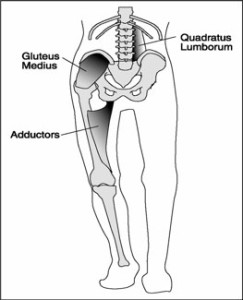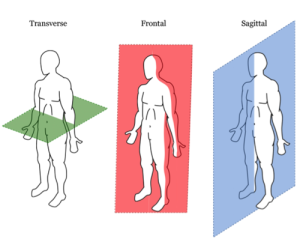How truly Functional for Football are the Squat and Deadlift?
The word ‘functional’ is such an overused ‘buzzword’ in todays fitness world, and has taken over from other such buzzwords like ‘core’ and ‘fat-burning zone’, and whilst the movement of the exercise and fitness industry away from Frankenstein-style muscle isolation and machine training towards a more ‘functional’ approach is certainly not a bad thing, the problem lies in the interpretation of what exactly a ‘functional’ exercise is. Now I’m not here to debate and point out the shortcomings in the fitness industry at large, but rather am interested in how this relates to footy training. We cover various aspects of ‘functionality’ and what exactly it means, especially in terms of footy, elsewhere, and so will not go over it again here. But here I would like to take the opportunity to use a couple of exercises as an example of my point here on functionality, to really get you thinking about it, and using these 2 key exercises, will hopefully make a lot of the jargon and ‘mumbo-jumbo’ associated with the word ‘functional’ make more sense, or certainly be easier to see through (in terms of seeing through all the bullshit basically.)
I have chosen the deadlift and the squat to use as the 2 exhibits. Why? Because they are probably the 2 exercises most widely regarded as ‘functional’ in the new approach to exercise in the fitness industry. In any debate about functional exercises and crap exercises, when asking someone ‘give me an example of a functional exercise’, I guarantee you the deadlift or the squat will be the first answer, and if there is a second exercise given, the other will be that second. And generally, this is pretty spot on – deadlifts and squats are certainly far more functional in general than leg extensions and hamstring curls and other such machine isolation rubbish because they;
- Use many muscle groups
- Require a great deal of core activation
- Require you to perform the movement in space (and in your own range of movement)
- Require the use of stabilisers throughout the body
- Mimic common daily and athletic movements (sitting down/standing up and bending and lifting.)
These are all very good things, but the key question when deciding on the functionality of an exercise is, ‘what are you training for?’ or ‘what physical qualities are you looking to work on?’ There is this belief out there currently that an exercise is either functional or not-functional, regardless of the situation or task at hand, and furthermore a belief that its as simple as one or the other with no shades of grey in between. However, the concept of a functional continuum discussed by Vern Gambetta in ‘Athletic Development’ is a much better way of looking at this topic, particularly in terms of athletic conditioning. In other words, every single conceivable exercise fits somewhere along this particular continuum depending on what the desired outcome is from performing that exercise.
 So where do the squat and deadlift fit in on this continuum exactly, when it comes to training for footy? Lets consider a couple brief, key points.
So where do the squat and deadlift fit in on this continuum exactly, when it comes to training for footy? Lets consider a couple brief, key points.
Deadlifts and squats are double-leg exercises
Deadlifts and squats allow you do move a tremendous amount of weight, therefore developing maximal strength very well, and therefore providing a platform from which to develop more power too. However it is also important to remember the importance of specificity in terms of the motor programs you are training. And remember, improvements in double leg strength doesn’t translate to improvements in single leg strength. At this point it is important to point out that virtually all movements in footy take place off of 1 leg at a time – sprinting, accelerating, decelerating, changing directions, kicking, and jumping (usually off 1 leg) just to name a few. Therefore, when it comes to movements and physical requirements of your physical structure and muscles in a game of footy, single legged exercise variations and improvements in these, would have far more carryover to game day situations.
Hip/Pelvic stabilisers
Just a brief point that is almost an add-on to the last point; when you are standing on 1 leg, your hip stabilisers and muscles around your hip/pelvis (including the larger muscles like the glutes and hamstrings too) have a lot more work to do than when standing on 2 legs. Essentially, when our weight is on 1 leg such as when running, jumping or kicking the footy (etc) the key pelvic stabilisers (Glutues Medius (side of pelvis), Quadratus Lumborum (lower back), adductor group (groin) are called into to support and stabilise the pelvis and keep movement and strain off the lower back and more importantly the knees and ankles. If these key pelvic stabiliser muscles aren’t firing and working properly when performing such movements, then pain and injury can result in other areas of the body that have to pick up the slack for these lazy muscles. Indeed research shows a very strong correlation between weak/lazy hip stabilsers and anterior knee pain.


Don’t let the anatomy get your head in a spin, the diagram is really only there to give you a visual picture of where they are to understand how their work will increase when on 1 leg. The key point is that on game day, these stabilisers are forced to work considerably due to all the single leg positions you are in repeatedly (literally with every step), and therefore training them in this single leg stance and various single leg patterns is important, because when training in a double leg stance, like a deadlift, the stabilisers have a lot less work to do, as having both feet on the ground almost cancels the work of each other out.
Sagittal plane only
There are 3 planes of movement (see the diagram below) and we operate in all these 3 planes of movement in everyday life, and certainly in a game of footy. In footy also, you are usually operating in at least 2 of these planes at the same time, but in many instances, in all 3 at the same time. However a big problem with strength training is the fact that about 90% of strength exercises performed out there (even ‘functional’ sports ones) are in the sagittal plane only. This is a big problem because remember the principle of specificity where movements and challenges in training need to be very similar to game day movements and challenges? Well if we aren’t even operating in the same planes of movement, this will detract from the carryover to game day. Squats and deadlifts, like most exercises performed, are sagittal plane dominant. There is virtually no frontal or transverse plane work incorporated in them. A single legged cable deadlift and row into a kick would add a frontal and transverse element to the deadlift pattern (and closely mimics the work of a hamstring in the kicking action in footy). A lateral lunge (which is actually more squat than lunge) would add a frontal plane element to the squat movement (and this closely mimics the sideways changing or direction when trying to evade an opponent). These are just 2 examples of how abbreviating the standard squat and deadlift gives them more carryover to specific movements in footy.

So then how functional are they?
Again, the first part to the answer should be ‘well that depends what physical quality you are looking to improve in your footy from performing these exercises.’ However, generally speaking, the answer is that they are functional yes – in terms of maximal strength development and preparing the body adequately for power development and more specific forms of strength, and they should be included in a footy strength training program – and indeed they are both included in Functional Strength Training for Australian Rules Football. However, when it comes to specificity, they are not as specific as single leg, and exercises which will challenge you through all 3 planes of motion. A mixture of the 2 is the best option. In terms of what types of specific exercises, as well as how exactly to put the 2 together and periodise them, well this is an article for another day, but is also covered and laid out in detail here in Functional Strength Training for Australian Rules Football.
Strength Coach

